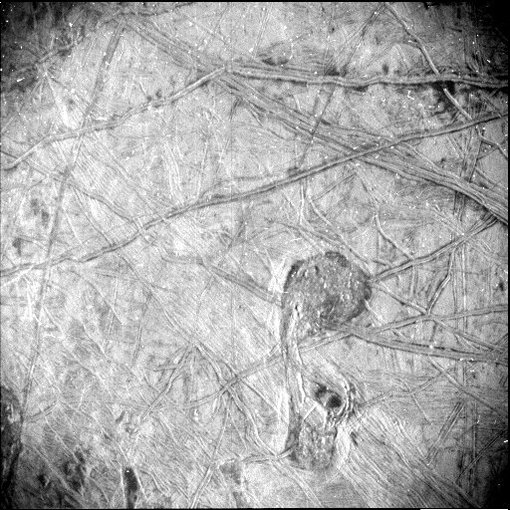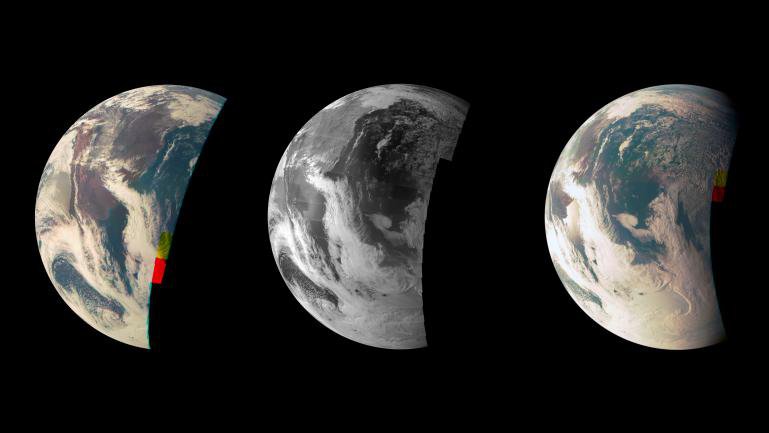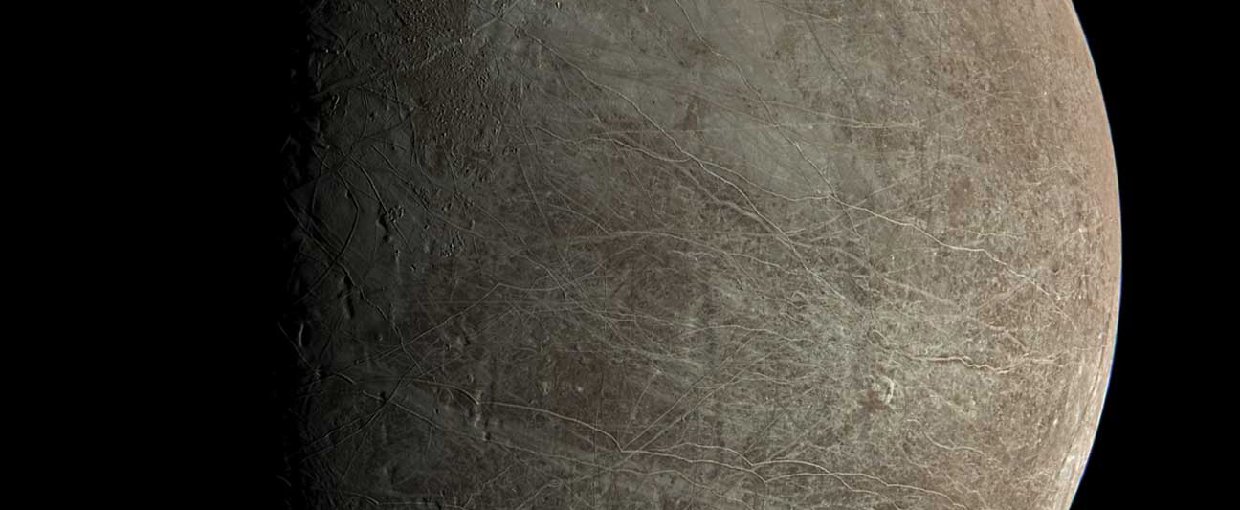
On September 30, 2022, NASA’s Juno spacecraft flew above the surface of Jupiter’s moon Europa at a distance of about 352 kilometers. This was only the third time a space mission passed within 500 kilometers of the moon, and the closest approach to Europa’s surface since NASA’s Galileo spacecraft in January of 2000.
Juno had just two hours to collect data with its multiple instruments as it sped past the moon at 15 miles per second. The information that Juno gathered will help astrobiologists better interpret features on Europa’s surface to help uncover details about the liquid water ocean that lies beneath the ice.
Using its Stellar Reference Unit (SRU) (a star camera primarily used for orientation), Juno captured the highest resolution photo thus far of a specific portion of Europa’s surface that was dimly lit by sunlight reflecting off of Jupiter’s clouds. The image reveals the moon’s fractured, icy crust.

Surface features of Jupiter’s icy moon Europa are revealed in an image obtained by Juno’s Stellar Reference Unit (SRU) during the spacecraft’s Sept. 29, 2022, flyby.Image credit: NASA/JPL-Caltech/SwRI.
Other images captured by the spacecraft’s JunoCam instrument provide spectacular views of Europa, and some of the photographs have been processed by enthusiastic citizen scientists from around the world. Citizen scientists have been invaluable in processing the numerous images that have been returned by Juno since 2013. The Juno mission launched in 2011 and arrived at Jupiter in 2016. However, the spacecraft also captured images of other worlds, including Earth, while en route to our solar system’s giant planet Jupiter. A collection of images from Juno can be found at the NASA JPL Photojournal.

This trio of Junocam views of Earth was taken during Juno's close flyby on October 9, 2013.Image credit: NASA/JPL-Caltech/MSSS.
Juno completed its primary mission in 2021, but received a first extension to continue operations until 2025. During this extension the spacecraft is exploring the Jovian system and will perform multiple flybys of the moons Ganymede, Europa, and Io. These Galilean moons are important locations for astrobiologists, with Europa and its subsurface ocean being one of NASA’s highest priorities in the Solar System for scientific exploration.
A recent post from Many Worlds discusses the new data gathered by Juno’s multiple instruments at Europa, as well as prospects for future exploration in the Jovian system.
Related Links:
The Juno Spacecraft Images Jupiter’s Moon Europa as it Speeds Past (Many Worlds)
NASA’s Juno Shares First Image From Flyby of Jupiter’s Moon Europa (NASAJPL)
Citizen Scientists Enhance New Europa Images From NASA’s Juno (NASAJPL)
The Many Worlds Blog chronicles the search for evidence of life beyond Earth written by author/journalist Marc Kaufman. The “Many Worlds” column is supported by the Lunar Planetary Institute/USRA and informed by NASA’s NExSS initiative, a research coordination network supported by the NASA Astrobiology Program. Any opinions expressed are the author’s alone.
